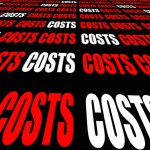If you want to start building your first workable budget, it is important to know exactly what should be in it, how to keep it updated, and the specific reason you want to have this budget.
What does a budget look like?

A budget is usually a spreadsheet or table. On one side or column, you will list your planned expenses, while on the other side you list your planned income.
You can use a budget for many different things, depending on the budget type. Using a mix of different budget types, as each situation finds appropriate, can be one of the most effective ways to reach your short term financial goals.
Budget Types
There are two types of budgets, each of which has its own place in your personal finance toolkit.
The Project Budget

A project budget is something you make just once for a specific purpose. For example, you might make a single-use budget when evaluating apartments you might move to (outlining costs of rent and transportation between a few different alternatives).
The project budget is the easiest budget to make because you do not necessarily need to keep managing it in the long term – this is a “one and done” way to address a specific problem.
The first budget most people make is a project budget to help look at their current expenses and see what adjustments need to be made. The problem with this approach is that project budgets work very well for short-term thinking, but tend to be difficult to follow for longer periods of time.
Project Budget Components
Your project budget is looking at a snapshot in time. This means you are comparing some known fixed expenses to a specific amount of income or money you can dedicate towards paying for it. The specific components are:
- Itemized list of known expenses for this period in time
- Total expected income or starting cash you have to allocate to this period in time
- Surplus – the total income minus the total expenses.
The purpose of the Project Budget is to maximize that surplus, or the money you have left over to allocate to other things.
Common uses for a Project Budget
- Comparing alternative apartments (building a sample budget for each alternative to compare)
- Planning a vacation
- Paying off short-term debt
- Other short-term crisis or goals
The Living Budget
Unlike the Project Budget, a Living Budget is meant to “grow” and adjust over time. These budgets are not designed for a specific goal or purpose, but instead to help you keep a general idea of where your money is going from month to month, and help you adjust your spending to reach your financial goals.
One of the major differences with a Living Budget is that while you make them looking forward, you also should look back regularly and make adjustments (not start over as needed).
Living Budget Components

Your living budget needs to be regularly adjusted and updated. To set up an effective living budget, you will need the following components:
- Regular monthly income (things like your paycheck)
- Variable income (gifts, one-off payments, ect)
- Regular monthly expenses
- Regular contributions to savings or other financial goals
- Expected variable expenses
Using Your Living Budget
Unlike the Project Budget, the goal of the living budget is not necessarily to maximize your surplus. Instead, your Living Budget has your savings and other financial goals built in, and you can adjust these every month or two along with your variable expenses.
With your Living Budget, having a big surplus every month is not necessarily a good thing, since that might be a sign that your financial goals might be set too low.
Expense Categories
With the Living Budget, you will notice that there is a difference between “regular”, or fixed, income and expenses with the “variable” income and expenses. When you set out to outline your budget, it is important to keep these distinctions separate.
There are 2 types of expenses, which each have 2 flavors.
Types:
- Fixed Expenses
- Variable Expenses
- Flavors:
- Needs
- Wants
Most people new to budgeting only consider needs and wants, but without fully breaking down where your money is going, it will be much harder to build a workable budget.
Category Breakdown
Each category has its own place in your budget, and when you want to reach a specific savings goal, these separations make it much easier to hit your targets.
Fixed Needs
Your “Fixed Needs” are things like paying rent, utilities, car payments, and groceries. These costs should not change very much from month to month.
When you are engaging in short-term financial planning, there is not much you can do to change your Fixed Needs expenses. With mid-term and long-term planning, finding ways to cut down or reduce these costs (or any increases to them, like getting a better apartment or car) will likely make the biggest changes impacting your long-term goals.
Fixed Wants

Your “Fixed Wants” are the costs that add up quickly over time, but most beginners frequently forget to include in their budgets. This includes things like morning coffee from Starbucks, going out for lunch with your friends or co-workers instead of bringing lunch from home, having dessert after dinner, and any other regularly-occurring expenses.
Your “Fixed Wants” include all the little pleasures or extras that you normally get in your day-to-day life – things that you know you could probably live without, but removing them would really sour your days.
Variable Needs
Your “Variable Needs” are expenses that are important, but you may not have them every month. This includes the extra money you will probably spend on heating in the winter, or semi-annual visits to the dentist, or Christmas/birthday gifts for friends and family.
Unlike your Fixed Needs, even with long-term financial planning, there probably will not be very much you can do to change your Variable Needs costs in the long run – you will always need heat in the Winter, always need your teeth fixed when they break, and always need oil changes on your car.
Variable Wants
“Variable Wants” are your expenses that come more “spur of the moment” – things like a night out for drinks with friends, shopping for some new clothes, or buying a new video game.
You usually will not be able to make a line-item budget for your variable wants, but you can estimate how much you spend each month based on your receipts and account reconciliation from the previous month. Once you know how much your Variable Wants are costing you, the next step is taking steps to make sure those costs are under control.
How To Use Your Living Budget
When you are making your Living Budget, you should do so shortly after your latest account reconciliation, where you lay out your 10 or 20 biggest purchases over the last month and consult your bank account. You may know off hand how much you spend on rent and electricity, but building realistic estimates for your variable expenses (both wants and needs) means you need to look at exactly how much you are already spending.
Once you have your expense breakdown from the previous month, you can build your budget for moving forward. This means setting some specific financial goals:
- Deposit $300 per month into your savings account
- This means you need to already have a surplus of $300, or make a separate goal to get this money from somewhere else
- Reduce Fixed Wants costs by $50 per month by brewing your own morning coffee 3 times per week
- Increase surplus by $100 per month to afford a nicer apartment
- Reduce Variable Wants costs by $75 per month, and apply that savings towards a yearly vacation savings fund
Putting Your First Goals Into Practice

To help make sure you hit your savings goals, split your “Savings Targets” in half for your budget. One half should go into your “Fixed Needs” category – this is money you are setting aside as soon as you get paid. The other half should be filed as a “Variable Want”, meaning a target you are setting, but until you have a few months of practice adjusting your budget, you might not be able to reach.
One common problem beginners face is combing both of these items together, then simply trying to increase their surplus by the amount they want to save per month. This tends not to work, simply because there is no concrete line item that you can admit to not reaching – it becomes easy to just roll over that goal by saying “I can just save more next month to make up for it!”.
By separating your first goal into smaller parts, it makes both parts easier to obtain. Having the fixed necessary savings means that you will make progress towards your goal even if everything else goes poorly, while the second half works as an extra incentive showing you have effective money management.
As you become more experienced building your Living Budget, you can shift a bigger percentage of your savings goals into your Fixed Needs category to have more stability, and more effective planning for the future.
If you want to start building your first budget, click here to try the Home Budget Calculator!

 Types:
Types:  5 Easy Steps to Grow Your Business
5 Easy Steps to Grow Your Business Direct stock purchase plans
Direct stock purchase plans
